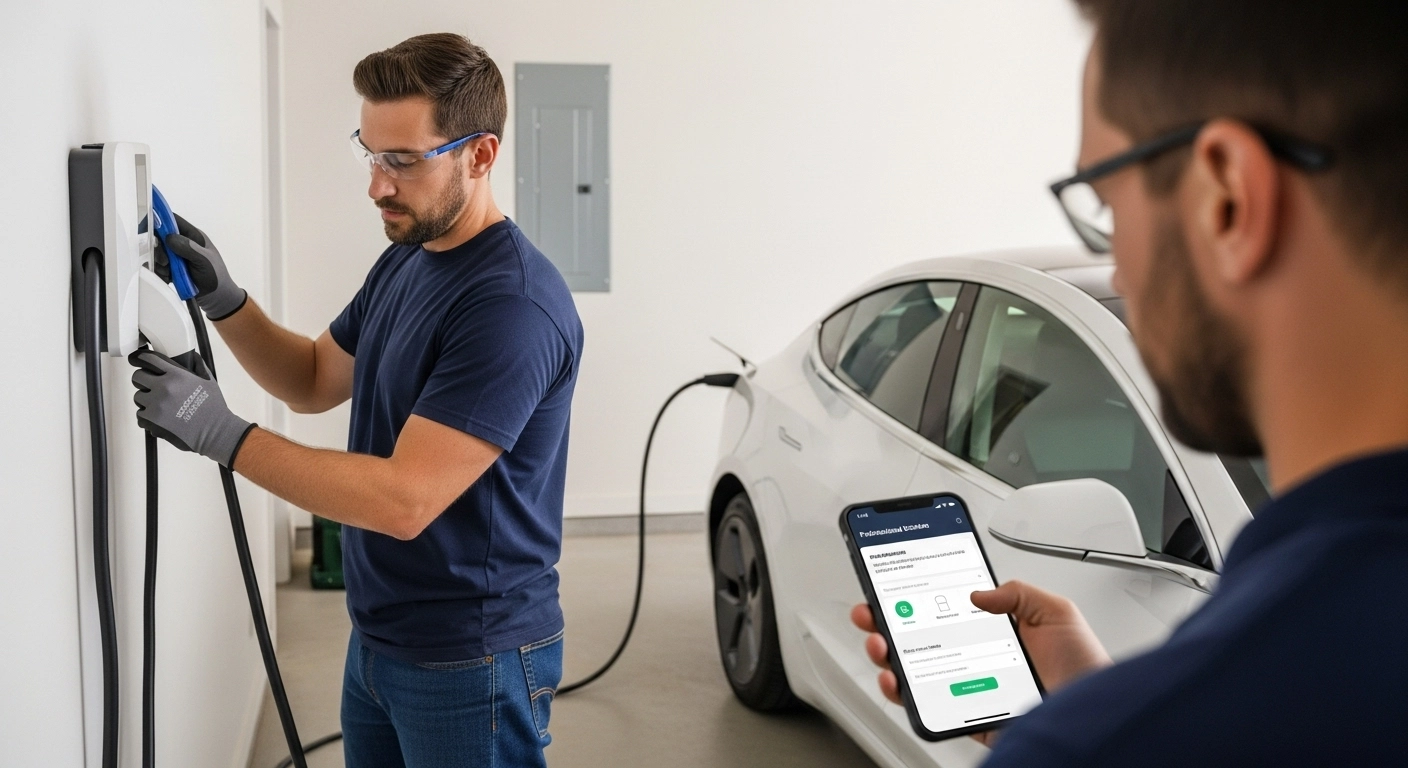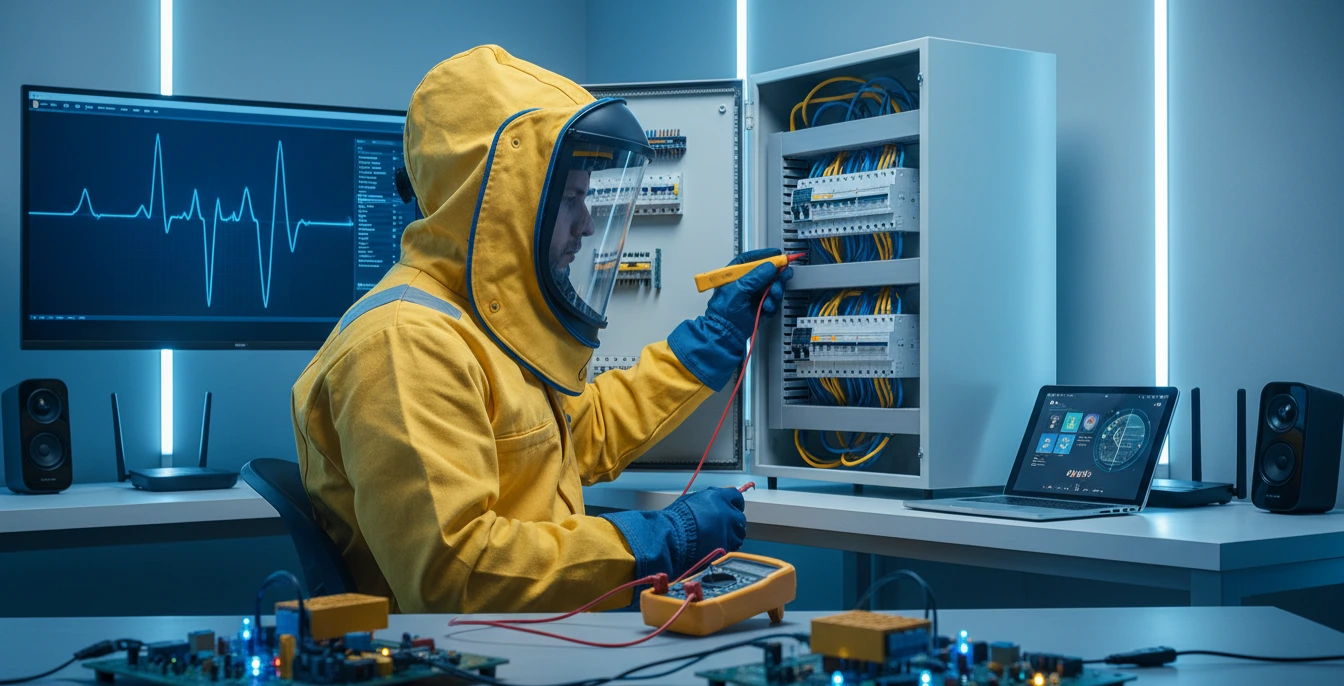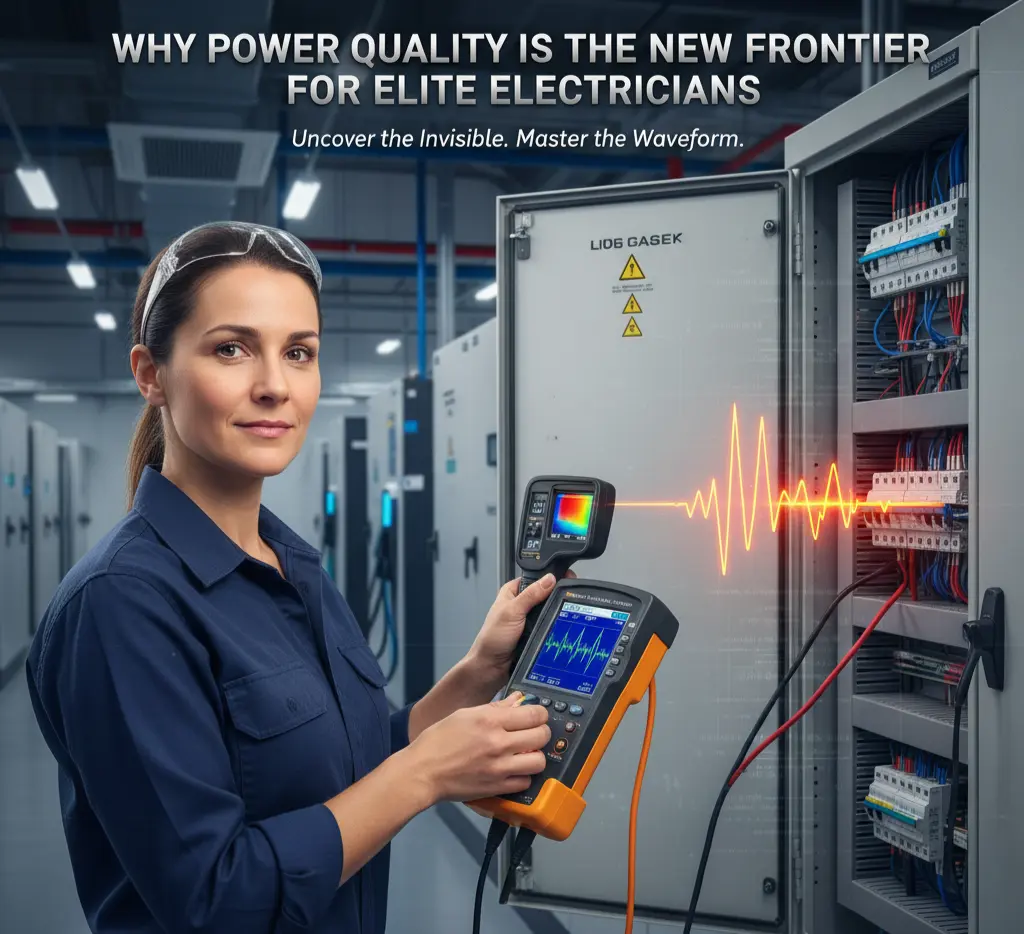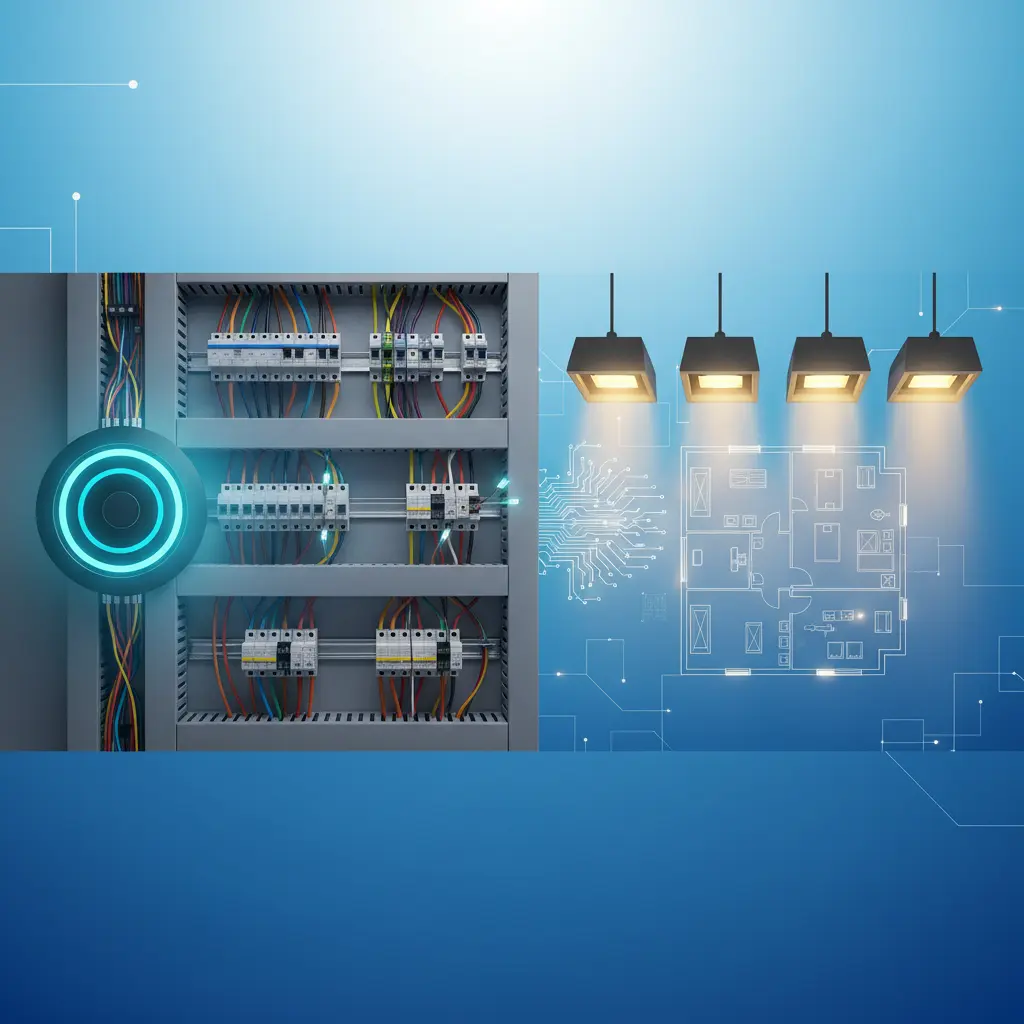Electrical
EV Gold Rush: How Smart Electricians Are Capitalizing on the $18 Billion Home Charging Market

The $50,000 Opportunity Hiding in Your Service Area
The residential EV charging market is projected to reach $18.6 billion by 2030, driven by the Biden administration's goal of 500,000 public chargers and millions more residential installations. For electricians, this represents an unprecedented revenue opportunity. But here's the reality: poor quoting practices are causing contractors to leave money on the table or worse—lose money on jobs that should be highly profitable.
The average Level 2 home charger installation ranges from $800 to $2,500, with panel upgrades adding another $1,500 to $4,000. An electrician completing just one EV installation per week at $1,500 average revenue generates an additional $78,000 annually. However, industry analysis shows that 25% of construction companies would face bankruptcy with just 2-3 severely underestimated jobs. In the EV space, where panel upgrades and permitting complexities are common surprises, accurate quoting isn't just about profit—it's about survival.
The Hidden Profit-Killers in EV Installations
Panel Capacity: The $3,000 Surprise
According to the U.S. Energy Information Administration, approximately 24% of U.S. homes were built before 1960, with many still operating on 100-amp electrical services. These homes often lack the capacity for a dedicated 40-amp or 50-amp EV charging circuit, especially when factoring in existing appliances.
The National Electrical Code (NEC) 220.82 requires a load calculation to ensure the service can handle continuous loads. A Tesla Model 3 charging at 32 amps represents a continuous load that, combined with existing appliances, often pushes older homes beyond their 100-amp service capacity. Electrical contractor surveys indicate that approximately 35% of EV installation quotes require unexpected panel upgrades, turning a straightforward $1,200 job into a $4,500 project.
The Permitting Maze That Varies by Zip Code
Permitting requirements for EV chargers vary dramatically across jurisdictions. In Denver, Colorado, a Level 2 EV charger installation requires a $65 electrical permit, while neighboring Aurora charges $85, and Westminster requires $125 plus a separate inspection fee. According to the International Association of Electrical Inspectors, permit costs nationwide range from $35 to $250, with processing times varying from same-day to six weeks.
Code compliance complexities add another layer. Some municipalities require GFCI protection for garage installations, others mandate specific spacing from doors and windows, and certain areas require additional bonding for outdoor installations. NECA reports that code violations and failed inspections account for 15% of EV installation callbacks, directly impacting profitability.
Labor Underestimation: The Distance Problem
The wire run distance between the electrical panel and charger location dramatically affects both material costs and labor time. Electrical industry data shows that wire costs for copper THWN-2 can vary by 300% based on gauge requirements for voltage drop compliance.
Example scenario: A 75-foot run to a detached garage requires 6 AWG copper wire (approximately $8.50 per foot) versus 10 AWG ($3.20 per foot) for a 25-foot run. Factor in conduit, trenching, or fishing wire through finished walls, and labor time can range from 4 hours to 12 hours for seemingly similar installations.
The Professional EV Installation Quote Framework
Phase 1: The Digital Pre-Assessment
Load calculation is mandatory, not optional. Use the NEC 220.82 standard to calculate existing loads:
- HVAC system: Typically 30-60 amps
- Water heater: 20-30 amps
- Electric range: 40-50 amps
- Electric dryer: 30 amps
- EV charger: 40-60 amps (continuous load)
Panel evaluation requirements:
- Service amperage (100A, 150A, 200A)
- Available breaker spaces
- Panel manufacturer and age
- Existing GFCI protection
- Grounding system compliance
Pro tip: Require photos of the electrical panel with the cover removed, the proposed charger location, and the complete wire path. This eliminates 90% of quoting surprises.
Phase 2: Charger Selection and Sizing Strategy
Present tiered options based on the customer's vehicle and charging needs:
Good (32A charger on 40A circuit):
- Charges most EVs at 25-30 miles of range per hour
- Compatible with all residential EVs
- Lower material costs
Better (40A charger on 50A circuit):
- Charges most EVs at 30-37 miles of range per hour
- Future-proofs for higher-capacity vehicles
- Standard recommendation
Best (48A charger on 60A circuit):
- Maximum charging speed for compatible vehicles
- Premium positioning
- Highest profit margins
Phase 3: Material Sourcing and Pricing
Wire gauge calculations using NEC 210.19(A)(1) for continuous loads and voltage drop:
- 25 feet or less: 10 AWG copper (50A circuit)
- 26-75 feet: 8 AWG copper (50A circuit)
- 76-100 feet: 6 AWG copper (50A circuit)
Don't forget the extras:
- Appropriate breaker ($45-$85)
- NEMA 14-50 outlet or hardwired connection ($25-$65)
- Conduit and fittings ($3-$8 per foot)
- Weather-rated components for outdoor installations
- Potential subpanel if main panel lacks space ($350-$800)
Phase 4: Professional Quote Structure
Structure your quote for transparency and professionalism:
- Equipment: Specify charger brand, model, and amperage
- Electrical work: "Installation of dedicated 50-amp circuit for EV charging"
- Materials: Itemize wire, conduit, breaker, and outlet
- Panel upgrade (if required): Separate line item with clear explanation
- Permits and inspections: Pass-through costs with transparency
- Optional upgrades: Whole-home surge protection, load management systems
Leveraging AI for Competitive Advantage
Manual calculation of load requirements, real-time material pricing, and permit research consumes 2-3 hours per quote. This is where Trade Agent's AI estimating engine transforms the game. Upload photos of the electrical panel and proposed charger location, and Arti instantly:
- Analyzes panel capacity and identifies available breaker spaces
- Calculates wire gauge requirements based on distance and load
- Sources real-time pricing for chargers, wire, and components
- Includes local permit fees and code requirements by zip code
- Flags potential issues like panel upgrades or GFCI requirements
What traditionally takes hours of research and calculation becomes a professional, code-compliant estimate delivered in minutes, allowing you to quote more jobs and win more profitable work.
Capitalizing on the EV Market Explosion
The residential EV charging market represents a $50,000+ annual revenue opportunity for electricians who master professional quoting practices. According to Cox Automotive, EV sales are projected to reach 26% of new vehicle sales by 2030, with 80% of charging happening at home.
Success requires moving beyond simple time-and-materials estimates to data-driven, professional quotes that account for every variable. Electricians who adopt this approach protect their margins, build customer trust, and position themselves as the go-to experts in their markets.
An AI-native platform built for trades is the only way to do this accurately and fast. For example, with Trade Agent, you can upload the initial photos of the electrical panel. Arti, your AI Agent, can analyze the image and instantly flag that it's a 100-amp service with no free slots, suggesting a subpanel be added to the quote. It automatically sources real-time pricing for three different Level 2 chargers and includes the specific permit fee for that client's zip code. This transforms hours of research and calculation into a professional, profitable estimate created in minutes.
Ready to stop leaving money on the table with your EV charger quotes? Start your free trial of Trade Agent and transform photos into profitable, professional estimates in minutes.
Frequently Asked Questions
What's the typical profit margin on EV charger installations?With accurate quoting and proper execution, electricians typically achieve 45-65% gross profit margins on EV installations, including both labor and material markups. Panel upgrades can boost total job profitability significantly when properly quoted upfront.
Do I need special certification to install EV chargers?While standard electrical licensing is sufficient in most jurisdictions, manufacturer-specific training programs (like Tesla's Wall Connector certification) can differentiate your services and potentially command premium pricing. Always verify local licensing requirements.
How do I handle customers who want to supply their own charger?Clearly state your warranty limitations when customers supply equipment. Consider offering a "Good, Better, Best" approach: customer-supplied charger (lower profit), your recommended charger (standard profit), or premium charger with extended warranty (highest profit).
What's the biggest mistake contractors make with EV installations?Failing to perform proper load calculations and panel assessments before quoting. Industry data shows that 35% of EV jobs require panel modifications that weren't included in the original quote, directly impacting profitability and customer relationships.
Similar posts
Try it for free


















